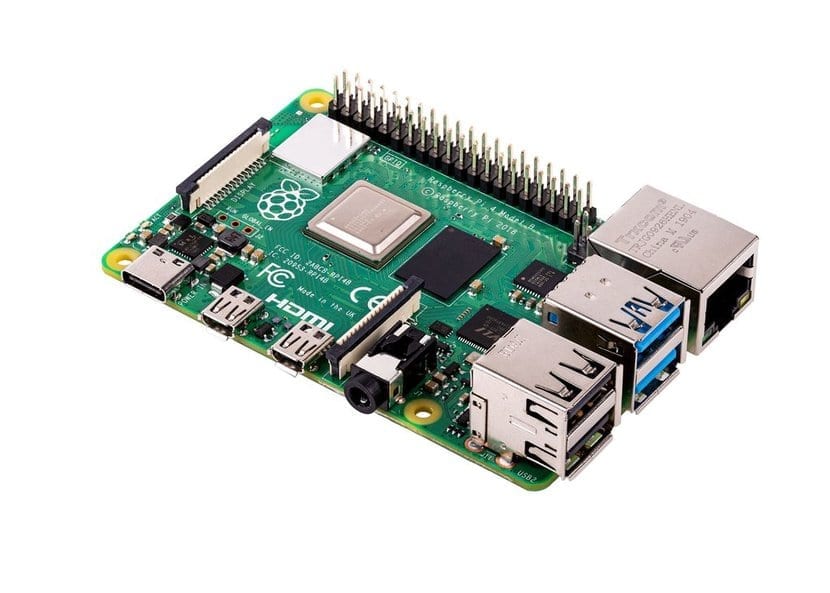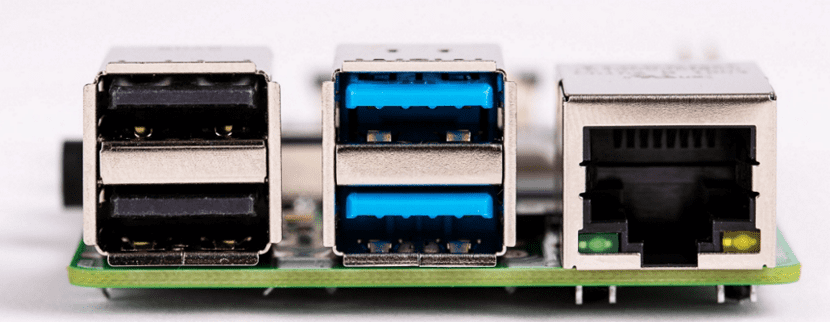
The Raspberry Pi Foundation has announced the availability of the fourth version of the mini pocket computer, Raspberry. The Raspberry Pi 4 keep the same appearance and the same starting price as its predecessor ($ 35).
The foundation still says that, “for the first time, it has made some essential changes in its shape to adapt to the new features. ' Since this new version improves the specifications in all areas.
The Raspberry Pi 4 is available starting today with 1GB, 2GB or 4GB of RAM priced at $ 35, $ 45 and $ 55, respectively.
It will cost $ 120 in the United States, so for other countries the variant may be a little higher for shipping reasons.
Raspberry Pi 4 Features
In this new version of Raspberry Pi 4 up to 4GB RAM now offered (four times as many as any Pi before it), a faster processor and GPU, faster Ethernet, dual-band Wi-Fi, twice as many HDMI outputs, and two USB 3 ports.
- Power supply: we went from USB micro-B to USB-C for our power connector. This supports an additional 500 mA of power, ensuring a total capacity of 1.2A for downstream USB devices, even with a large processor load.
- Video: To integrate a dual display output into the existing board space, I changed the HDMI type A connector (normal) with a two HDMI type D connectors (micro), these connections have 4K support for both outputs.
- Ethernet and USB: the input for the internet cable has been moved to the upper right from the board, starting from the right, greatly simplifying routing.
While the 4-pin Power-over-Ethernet (PoE) connector remains in one place, allowing the Raspberry Pi 4 to continue to support PoE HAT.
The SoC main Ethernet controller is connected to an external Broadcom PHY via a dedicated RGMII link, providing full performance.
USB is provided through an external VLI controller, connected to a single PCI Express Gen 2 lane and providing 4 Gbps of total bandwidth, shared between the four ports.
In all other respects, the arrangement of connectors and mounting holes remains the same, ensuring compatibility with existing HATs and other accessories.

Raspberry Pi 4 vs Raspberry Pi 3 Comparison
- Broadcom 1,5 GHz quad-core processor, compared to the previous 1,4 GHz model.
- 500 MHz VideoCore VI GPU, up from 400 MHz previously.
- A USB Type-C port for power, instead of micro USB.
- Two Micro HDMI ports that can power two 4K monitors at 30fps or a single 4K monitor at 60fps with a 1080p display.
- Two USB 3 ports and two USB 2 ports, compared to four USB 2 ports.
- A Gigabit Ethernet port that is no longer limited by a USB interface.
- Bluetooth 5.0 instead of 4.1.
- Dual-band 802.11ac Wi-Fi.
- A microSD storage card with a theoretical maximum transfer rate of 50 Mbps, instead of 25 Mbps.
- One 40-pin GPIO connector that supports three other interfaces; I2C, SPI and UART.
Is Raspbian Ready for Raspberry 4?
Knowing a little about the components of the new Raspberry 4, many will wonder and Raspbian is ready for it.
In response to it, the guys from the Raspberry Pi Foundation will deliver a new version of Raspbian based on the next version of Debian 10 Buster.
This brings many technical improvements in the background, a greatly modernized user interface, and updated applications, including the Chromium 74 web browser, and much more.
These updates mean that the Raspberry Pi 4 can be used as a replacement for a budget desktop PC if you opt for its more expensive 4GB model.
According to a benchmark, the hardware is capable of handling many of your daily tasks, such as web browsing with up to 15 Chromium tabs, light image editing with GIMP and document and spreadsheet work with Libre Office.
?